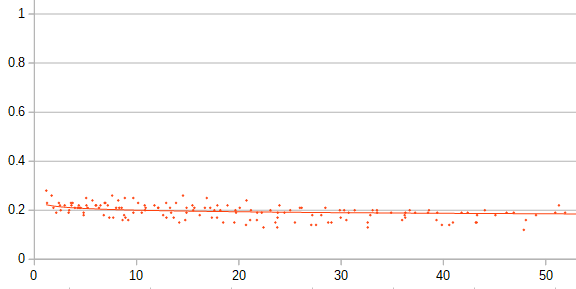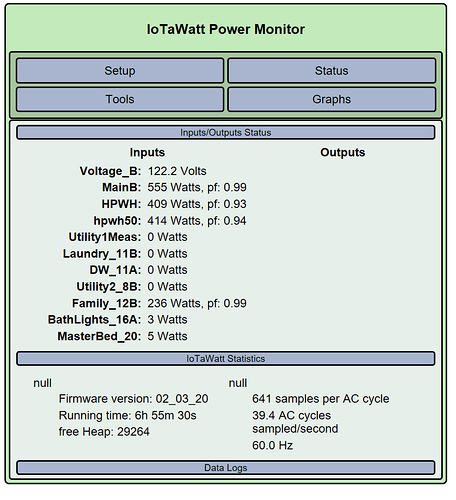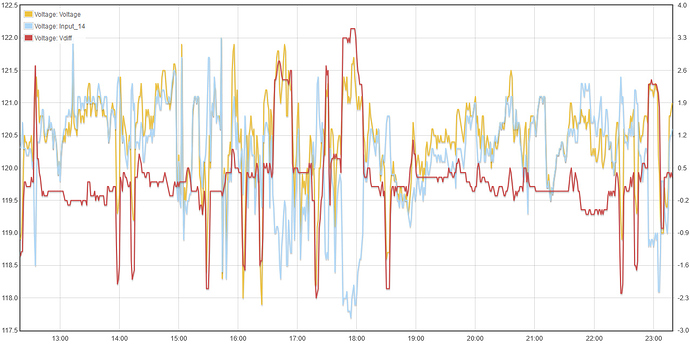I took a look at the split-phase voltage issue awhile back. I think it was when I was still participating in the OEM community. What I came to believe is that, while also a polyphase problem, it’s quite a bit different from the three-phase problem.
I had hooked up a second VT to my other leg for a few weeks. Not sure how accurately I callibrated the second VT, but stare at this for a minute until it starts to make sense.
Taking the big view, the two seem to pretty much go up and down together. I’m on a shared transformer. There are 6 other houses contributing to the load. A characteristic of the US split-phase power system is that larger loads are typically 240V. In other words, they effect both legs equally. So as the collective load of all of the houses goes up and down significantly, it should be these larger appliances like water heaters, clothes-dryers, and ranges (not to mention electric heat but I don’t believe there is any here). So they cause both legs to vary. This works well when the voltage of one leg is a proxy for the other.
I just created an output that is the difference between the two legs and added it to the graph with the right side scale:
You can see that for the most part, the difference between the two legs is in a small range of about +/- 0.5V. That’s not too bad at all. But what about those spikes? I’ve got data here to explain them.
When there is a transient large difference, I believe it’s because of an imbalance between the two legs - a large 120V load. That causes current to flow through the neutral wire back to the transformer. The voltage drop across that neutral wire increases as the current increases. My neutral is probably 250 feet long, aluminum wire. It has resistance.
So lets test that out, notice the prominent places where the “voltage” leg drops, and the “input_14” leg goes up. Now look what happens when I add a 1200W 120V booster water heater to the plot:
I think that accounts for just about every one of those dips. What about the excursions the other way? My dishwasher has a 1000W+ temperature boost that uses 120V:
So you can see that for the most part, the larger loads that naturally use 240V do not have much of an effect on the reliability of doubling one leg to get total voltage. It’s a self-correcting system. When medium power appliances are used locally, they can cause a larger variation, but it’s usually transient and a small part of the overall story. I see no evidence at all of my neighbors’ 120V loads, because it’s all about their neutral wire to the transformer.
My conclusion is that unless your panel is heavily loaded and out of balance, the single VT reference is as fine. That said, when version 4.9 of the IoTaWatt comes out in a few months, you will be able to add another VT for the other leg and use that for the reference on those circuits.
EDIT: I dug up this data from Oct 2017 using the history and graph features of my home IoTaWatt. I had only collected this data for a couple of months, but it was still there, and I was able to also create the voltage difference output today and plot it with that historic data. The water heater and dishwasher as well as all the other inputs are all still there too, and should be for a decade or more.






 )
)